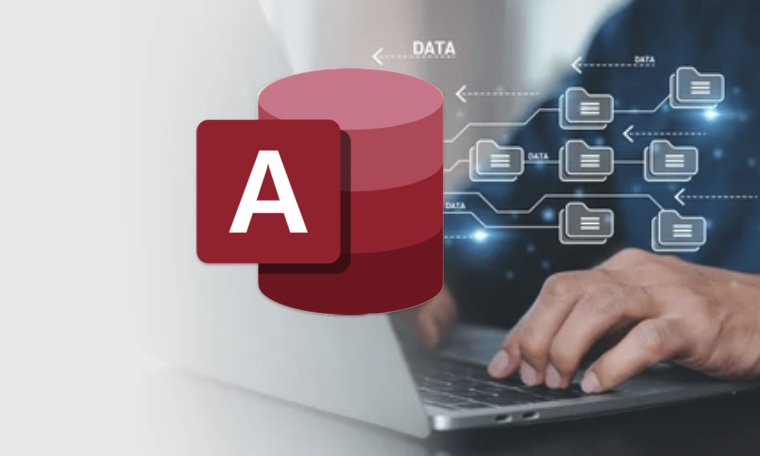When multiple team members need to work simultaneously on the same data, knowing how to share an Access database becomes crucial. Microsoft Access offers several methods to enable effective database sharing, ensuring data integrity and ease of access. This article walks you through these methods, ensuring that you can set up your database for multi-user access efficiently.
Understanding Multi-User Access in Microsoft Access
Before diving into the details of sharing an Access database, it’s essential to understand what multi-user access entails. Microsoft Access allows multiple users to access a database simultaneously from different computers. This capability is vital for teams needing to enter, update, or analyze data concurrently without conflicts or data corruption.
- Shared Database File: A central file stored in a location accessible by all users.
- Front-End and Back-End Split: Separating the database into two parts can enhance performance and security.
Setting Up a Shared Network Location
The first step in how to share an Access database is setting up a shared network location where the database file can be accessed by all intended users.
Choose a Network Location
The first step is to select an appropriate network location where the Access database file will be stored. This location should be secure, accessible to all intended users, and preferably located on a reliable network drive. Consider the following factors when choosing a network location:
- Security: Ensure that the network location is adequately secured to prevent unauthorized access to the database file.
- Accessibility: Choose a location that can be easily accessed by all users, regardless of their physical location or network connectivity.
- Reliability: Opt for a network drive with a stable connection and reliable backup mechanisms to minimize the risk of data loss.
Set Permissions
Once the network location is chosen, the next step is to configure permissions to allow users to read from and write to the folder containing the Access database. Proper permission settings ensure that users have the necessary access rights to work with the database effectively. Follow these guidelines when setting permissions:
- Read and Write Access: Grant all intended users read and write permissions for the folder containing the Access database file. This allows users to open, edit, and save changes to the database.
- User Groups: Consider organizing users into groups based on their roles or permissions requirements. Assign permissions to groups rather than individual users to streamline management and ensure consistency.
- Security Groups: Utilize security groups to enforce access control policies and restrict access to sensitive database resources. Regularly review and update security group memberships to maintain data security.
This setup minimizes network traffic and improves response times, as only data, not forms and queries, travels across the network.
Splitting the Database into Front-End and Back-End
Splitting your Access database into a front-end and a back-end is a best practice for multi-user environments.
Back-End Database
The back-end database primarily houses the tables containing the actual data. It is typically stored on a shared network drive accessible to all users. Here are the key characteristics of the back-end database:
- Data Storage: The back-end database exclusively stores tables containing data, such as records, transactions, and other relevant information.
- Network Location: It is situated on a shared network drive, ensuring centralized access for all users within the network.
- Secure Storage: Proper access controls and permissions are implemented to safeguard the integrity and confidentiality of the stored data.
- Data Integrity: Data integrity measures, such as referential integrity constraints and validation rules, are enforced to maintain the consistency and accuracy of the database.
Front-End Database
The front-end database serves as the user interface component, containing forms, queries, reports, and linked tables that interact with the back-end data. Each user typically has their own copy of the front-end database installed on their computer. Here are the key features of the front-end database:
- User Interface: The front-end database provides a personalized user interface tailored to the specific needs and preferences of each user.
- Linked Tables: It includes linked tables that establish connections to the tables stored in the back-end database, enabling seamless access to the shared data.
- Queries and Forms: Queries and forms are created within the front-end database to manipulate and display data retrieved from the back-end tables.
- Reports: Reports generated from the front-end database offer insights and summaries based on the data stored in the back-end.
This structure allows users to have a personalized front end while sharing the same data stored in the back end.
Managing Record Locking

To avoid conflicts when multiple users edit the same data, Access uses record locking. Understanding and configuring record locking is essential in how to share an Access database.
No Locks
In this locking mode, users can view data without any restrictions. However, conflicts may arise if multiple users attempt to edit the same record simultaneously. Here are the key characteristics of “No Locks” mode:
| Advantages | Disadvantages |
| Allows concurrent access to data for viewing purposes | Potential for data conflicts and inconsistencies if edits overlap |
| Supports real-time data visibility for all users | Increased risk of data corruption and loss of data integrity |
All Records
When “All Records” locking mode is enabled, Access locks all records in a table as soon as any user begins editing. This prevents other users from editing the same records until the initial user completes their edits. Here’s an overview of “All Records” locking:
| Advantages | Disadvantages |
| Prevents conflicts by locking entire tables during editing. | May lead to decreased concurrency and slower performance, especially in scenarios with frequent edits by multiple users. |
| Ensures data consistency by allowing only one user to modify records at a time. | Users may experience delays if they need to wait for locked records to become available for editing. |
Edited Record
In “Edited Record” locking mode, Access only locks records that are actively being edited by a user. This allows other users to view and edit different records simultaneously, minimizing conflicts and optimizing concurrency. Here’s what you need to know about “Edited Record” locking:
| Advantages | Disadvantages |
| Maximizes concurrency by only locking records that are being edited. | Potential for conflicts if multiple users attempt to edit the same record simultaneously. |
| Optimizes performance by allowing multiple users to work on different records simultaneously. | Requires careful coordination and communication among users to avoid data inconsistencies. |
Configuring the correct locking strategy prevents data corruption and ensures data integrity.
Implementing User Roles and Permissions
Implementing user roles and permissions is crucial for managing who can view or edit data in a shared Access database.
Create User Groups
The first step in implementing user roles and permissions is to create user groups based on job roles, access needs, or organizational hierarchy. Grouping users with similar access requirements simplifies permission management and ensures consistency. Consider the following factors when creating user groups:
- Job Roles: Group users based on their job responsibilities, such as administrators, managers, analysts, or general users.
- Access Needs: Identify different levels of access required for various tasks or departments within the organization.
- Organizational Hierarchy: Align user groups with the organizational structure to reflect reporting relationships and access privileges.
Example User Groups:
| User Group | Description |
| Administrators | Users with full access and administrative privileges. |
| Managers | Users responsible for overseeing specific departments or projects. |
| Analysts | Users who require access to data for analysis and reporting. |
| Sales Team | Users involved in sales activities and customer management. |
Assign Permissions
Once user groups are established, assign permissions to each group to regulate their access to specific tables, queries, forms, and reports within the Access database. Tailor permissions to align with the responsibilities and tasks associated with each user group. Consider the following when assigning permissions:
- Table-Level Permissions: Specify whether each user group can view, edit, insert, or delete records in specific tables.
- Query Access: Determine whether users have permission to run, modify, or create queries to retrieve and manipulate data.
- Form and Report Access: Control access to forms and reports based on the user group’s requirements for data entry, analysis, and reporting.
Example Permission Assignments:
| User Group | Table Permissions | Query Access | Form/Report Access |
| Administrators | Full access | Full access | Full access |
| Managers | Read/write access | Read-only | Limited access |
| Analysts | Read-only access | Read-only | Limited access |
| Sales Team | Read/write access | No access | Full access |
This setup helps in maintaining data security and operational efficiency.
Using Cloud Services for Access Database Sharing

Cloud solutions like Microsoft OneDrive or SharePoint can be used to host your Access database, making it accessible from anywhere with an internet connection.
Accessibility
One of the primary advantages of utilizing cloud services for Access database sharing is the ability to access the database from multiple locations. Traditionally, Access databases are stored locally on a single device or network server, limiting access to users within the same physical location or network. However, by migrating the database to a cloud platform, such as Microsoft OneDrive or SharePoint, users can access the database from anywhere with internet connectivity.
| Traditional Approach | Cloud Approach |
| Limited to local network or device | Accessible from anywhere with an internet connection |
| Requires VPN or remote desktop access for off-site usage | No need for VPN or remote desktop access |
With cloud hosting, users can connect to the Access database using their preferred device, whether it’s a desktop computer, laptop, tablet, or smartphone. This increased accessibility enhances productivity by enabling users to work on the database from remote locations or while on the go.
Backup and Recovery
Another significant advantage of using cloud services for Access database sharing is the built-in backup and recovery features offered by many cloud platforms. Cloud providers typically include automatic backups as part of their service offerings, ensuring that your database is regularly backed up to secure storage.
| Traditional Approach | Cloud Approach |
| Manual backups required | Automatic backups included |
| Risk of data loss in case of hardware failure or corruption | Data regularly backed up to secure cloud storage |
By hosting your Access database in the cloud, you mitigate the risk of data loss due to hardware failure, corruption, or accidental deletion. Cloud backups provide an additional layer of protection, allowing you to restore previous versions of the database in the event of data corruption or accidental changes.
Collaboration Features
Cloud platforms offer enhanced collaboration tools that facilitate teamwork and communication among users sharing the Access database. Features such as real-time co-authoring, version history, and integrated communication tools promote seamless collaboration and information sharing.
| Traditional Approach | Cloud Approach |
| Limited collaboration capabilities | Enhanced collaboration tools available |
| Manual file sharing and version control | Real-time co-authoring and version history |
| Communication via email or shared network drives | Integrated communication tools (e.g., chat, comments) |
With cloud-hosted Access databases, multiple users can work on the same database simultaneously, making updates and edits in real-time. Version history allows users to track changes and revert to previous versions if needed, ensuring data integrity and consistency. Additionally, integrated communication tools streamline collaboration by enabling users to communicate within the context of the database, reducing the reliance on email or external communication channels.
Conclusion
Sharing an Access database effectively involves careful planning and implementation of network setups, database architecture, and user access controls. By following these guidelines, teams can work together seamlessly, ensuring data integrity and efficiency in their collaborative efforts.
FAQ
For small teams, splitting the database and sharing the back-end on a local network drive is typically sufficient.
Implement user authentication and encryption. Assign user roles and permissions strictly based on necessity.
Yes, using cloud services like Microsoft SharePoint or hosting on a remote server are viable options for internet-based sharing.
Consider reducing the size of your database by archiving old data, optimizing queries, and ensuring the network connection is robust.
Regular backups are crucial. Automate daily backups and ensure they are stored in a secure location.




